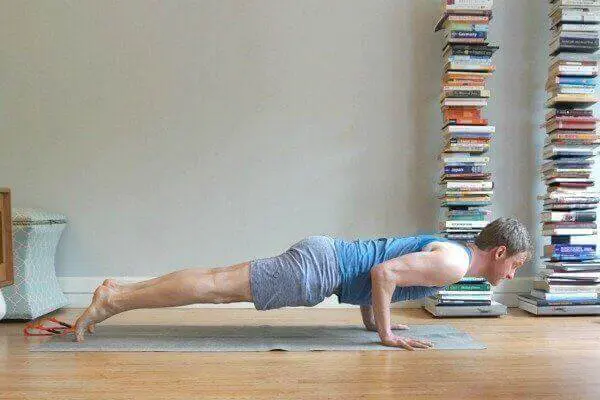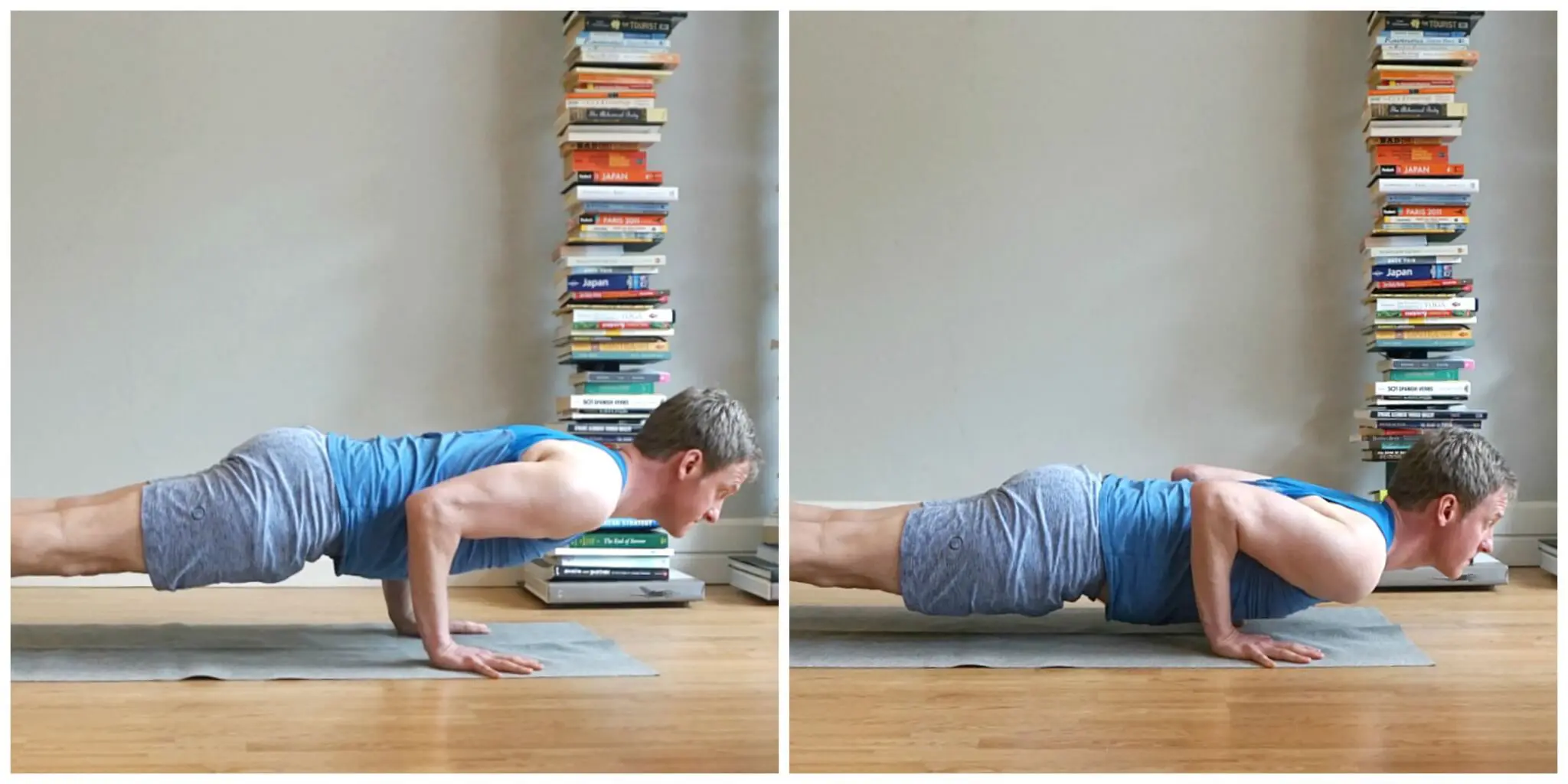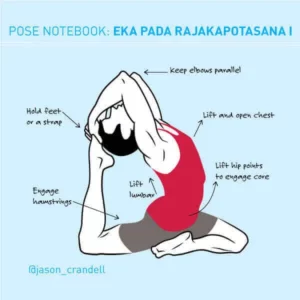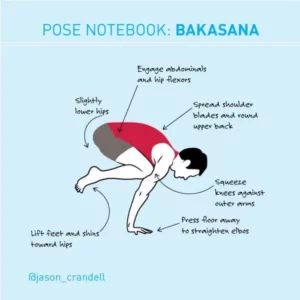A Shoulder Surgeon’s Perspective on Keeping Your Shoulders Safe in Chaturanga Dandasana
I’ve had exceptional yoga teachers over the years, but I also love to work with medical professionals and physical therapists to get their thoughts about body mechanics, alignment instructions, injury management, and injury prevention. Paul Roache, MD is a board certified orthopedic surgeon (with a sub-specialty in shoulder surgery) who I’ve worked with for more than 10 years. Paul has been my student and assisted my classes over the years, and we’ve taught trainings and workshops together, and worked with private clients to manage their shoulder injuries.
Paul has not only refined my thoughts about shoulder mechanics and shoulder alignment, he’s done something much more important: he’s broken down why particular shoulder alignment patterns are so important and helped me understand which parts of the shoulder are most likely to be overly stressed when they’re misaligned in postures, especially Chaturanga Dandasana.
Chaturanga Dandasana Shoulder Alignment Tips
TWO WAYS TO KEEP YOUR SHOULDERS HEALTHY IN CHATURANGA
Although Chaturanga is demanding, keeping your shoulders safe is relatively simple. In fact, for students with otherwise healthy shoulders, there are two ways to protect your shoulders from injury in this pose.
First, make sure that your shoulders don’t move into extension. Instead, keep your elbows in line with the side of your torso. If you lower your torso — or dip your shoulders — too low, your elbows will move behind your body and put your shoulders at greater risk. Second, firmly squeeze your elbows against the sides of your body, rather than allowing them to separate away from your torso. The photos below show you what these dynamics look like.

MAXIMIZE SAFETY BY MAXIMIZING STABILITY
If you want a quick, easy solution to keeping your shoulders happier and healthier in Chaturanga, there you have it: Maintaining shoulder stability in yoga postures is the most effective way to protect your shoulders from injury. Hug your elbows into your side-body and don’t go so low that your shoulders move into extension. Those are the doctor’s orders. If you want to nerd-out a little and dig deeper into the rationale for these actions, stay tuned — it gets very interesting (if you find this kind of thing interesting).
If you don’t do the two actions above in Chaturanga, your shoulders will be less stable and more vulnerable. To understand why this is the case, we need to compare the two major ball and socket joints of your body—your shoulders and your hips.
Your hip socket is a deep cup made almost entirely of bone. The ball (head of the femur) sits almost completely in this cup of bone. Since the ball sits deeply inside the cup of bone, it’s inherently stable. This means that the femur is not dependent on the surrounding muscles to stay in the socket.
Whereas your hip joint is inherently stable, your shoulder’s ball and socket joint is inherently unstable. Your shoulder’s ball and socket joint (the gleno-humeral joint, or GH) has a deep socket on the shoulder blade, but the boney cup of the socket is very shallow. In fact, the majority of the socket is made of ligaments and muscles.
In your hips, the cup that your femur sits in is comprised of bone. Your shoulders are different. The bottom of the cup that the humerus sits in is bone, but the remainder of the cup is comprised of muscles and ligaments. The ball requires the muscles, ligaments (and several other factors) to work together to keep the ball in the socket. This means that the ball can move outside of the socket if the surrounding muscles, ligaments (and other factors) don’t do their job properly.
You can see these distinctions clearly in the images below. You’ll see that the head of the femur is entirely encircled by bone. Comparatively, you’ll see that the humerus has much more shallow contact with the scapula.
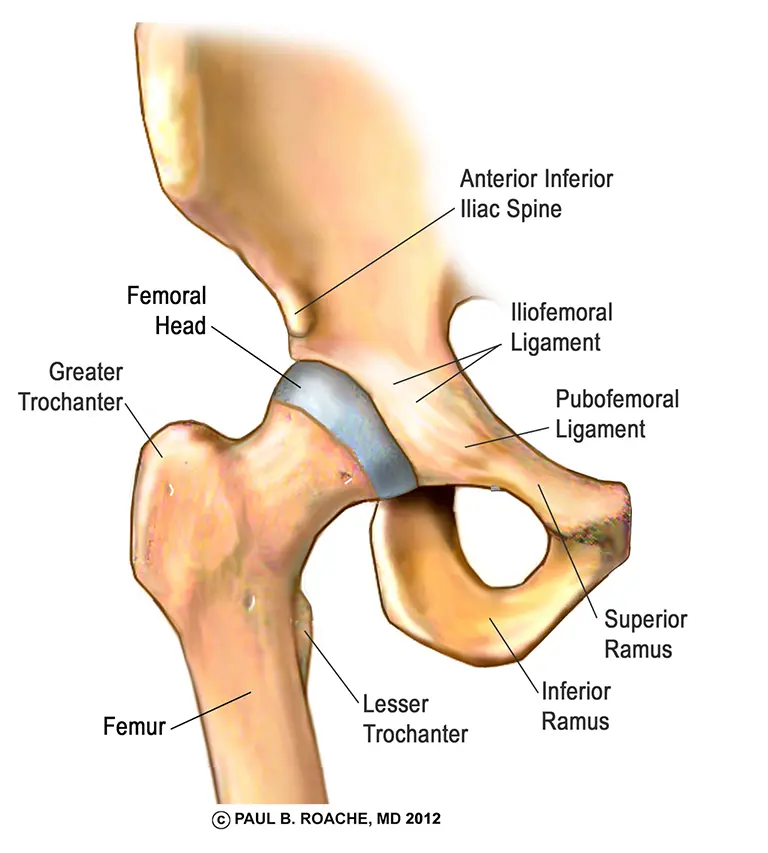
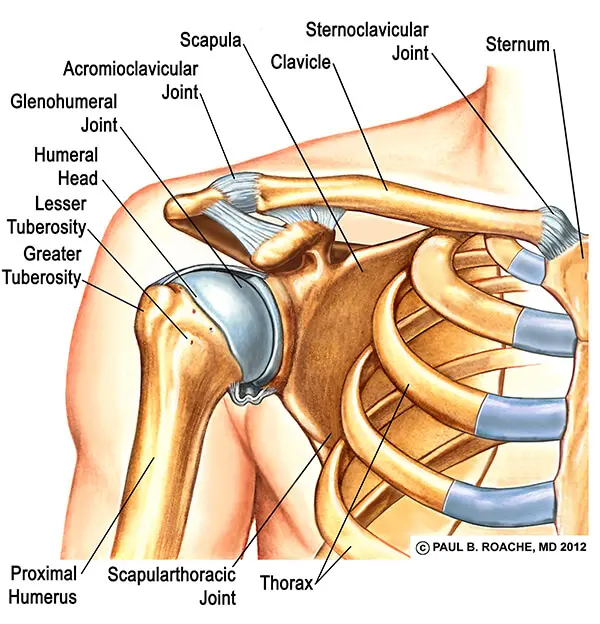
SO WHAT DOES THIS MEAN FOR CHATURANGA DANDASANA SHOULDER ALIGNMENT?
Remember, maintaining shoulder stability is the most important key to keeping your shoulders safe in Chaturanga. So, what are the most common situations in Chaturanga that decrease shoulder stability and leave the shoulder vulnerable to injury?
1) When the elbows move away from the body.
2) When the torso lowers below your elbows and your shoulders move into extension.
3) A combination of moving the elbows away from the body and lowering the torso below the elbows.
So, when you do any of the three actions above, it decreases shoulder stability, which can lead to a host of problems including impingement, rotator cuff strain, inflammation and more.
On the other hand, when you keep your torso level with your elbows and hug your elbows against your torso, you maximize the stability of your shoulder joint. These are simple enough concepts, but they are challenging to perform.
Of course, developing the strength to maintain these shoulder positions in Chaturanga is incredibly difficult. And, students often need good alternatives to Chaturanga —especially if they’re not strong enough to do the pose or if they’re managing a shoulder or wrist issue. I’ll tackle these topics in Part II & III of this series.
